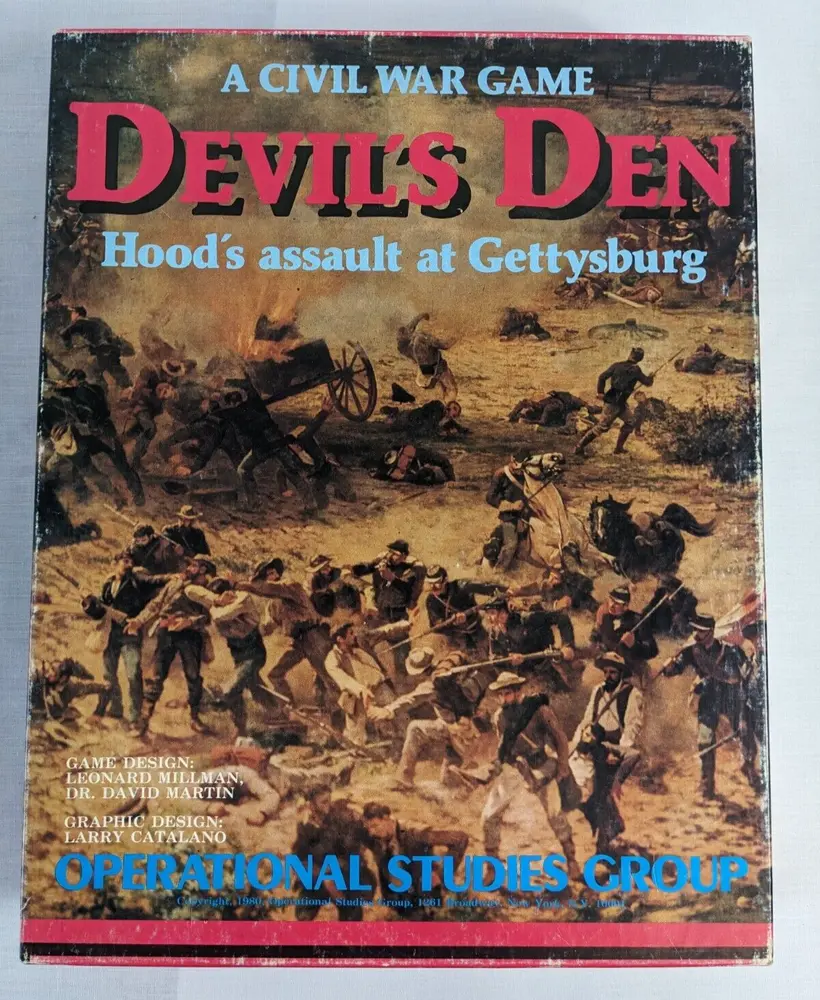Devil’s Den (1980)
Devil’s Den
“Devil’s Den: Hood’s Assault at Gettysburg” is a board game published by Operational Studies Group (OSG) in 1980, designed to simulate the fighting to control the key Devil’s Den terrain feature during the 1863 Battle of Gettysburg in the American Civil War. The game was created by Leonard Millman and Dr. David Martin, who had previously produced the American Civil War wargame “20th Maine” in 1979. The game was later acquired by Avalon Hill, which revised the rules to include basic and advanced games and republished it with artwork by Charles Kibler and George I. Parrish, Jr.
Why is Devil’s Den Popular?
The game is popular and significant because it simulates a crucial moment in American history, the Battle of Gettysburg, and allows players to experience the strategic and tactical challenges faced by both Union and Confederate forces during this pivotal event. The game has received positive reviews for its refined gameplay and historical accuracy.
Game Components of Devil’s Den
How To Setup Devil’s Den
Setting up *Devil’s Den* involves laying out the hex grid map, sorting and placing the counters according to the scenario being played, and distributing the necessary player aid charts and rule book. Players must ensure all components are correctly aligned and positioned as specified in the rule book to accurately simulate the historical battle.
Gameplay Mechanics and Game Objective
Player Experience
Playing *Devil’s Den* provides a deep and immersive experience into the strategic and tactical aspects of the Battle of Gettysburg. The game is praised for its historical accuracy and detailed mechanics, making it a favorite among historical wargamers. However, it is noted for its slow pace due to the large number of counters and markers in play, which can be both engaging and challenging.
Pros
Cons
Personal Thoughts on Devil’s Den
*Devil’s Den* is ideal for historical wargame enthusiasts and those who appreciate detailed, strategic gameplay. It is not a game for casual players due to its complexity and lengthy playtime. However, for those who enjoy delving into the intricacies of historical battles, *Devil’s Den* offers a rich and rewarding experience.
We are supported by our audience. When you purchase through links on our site, we may earn an affiliate commission, at no extra cost for you. Learn more.

